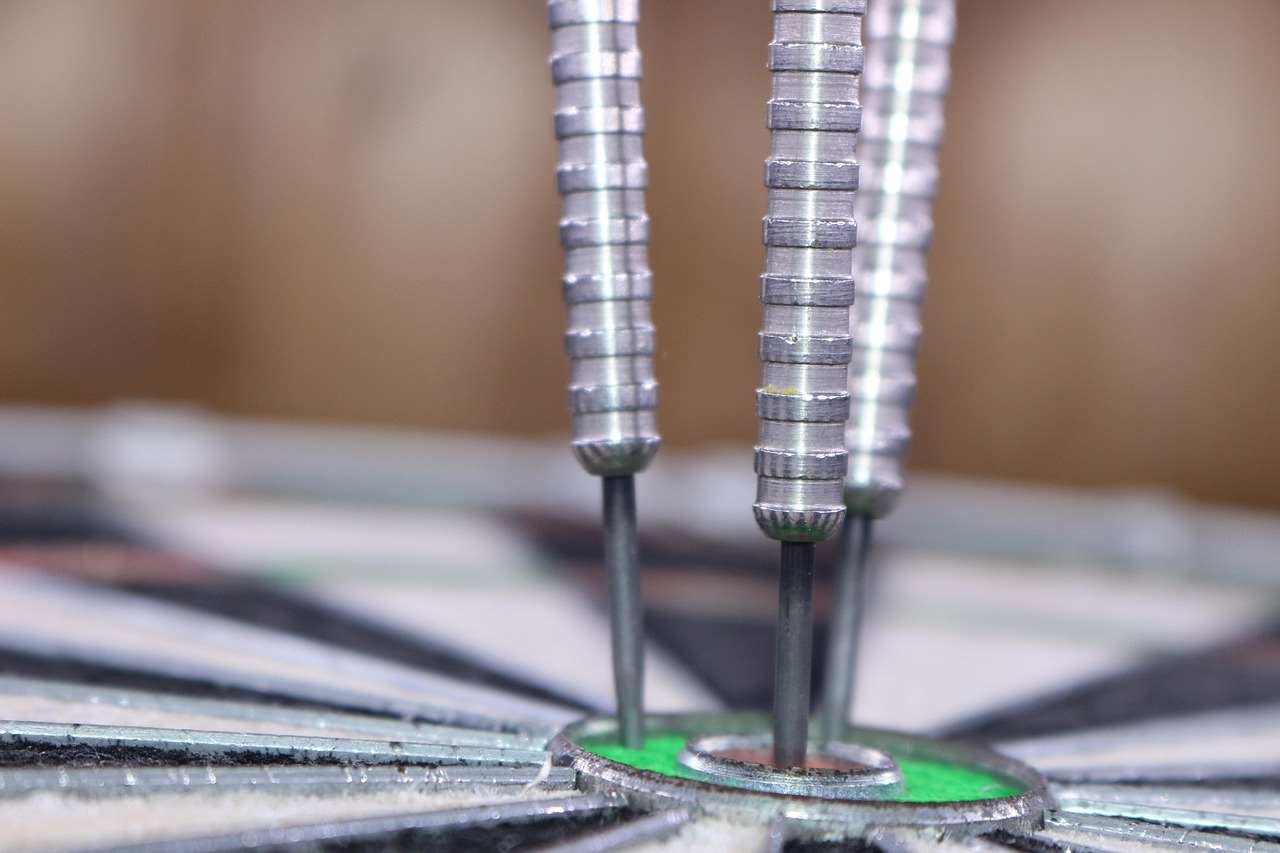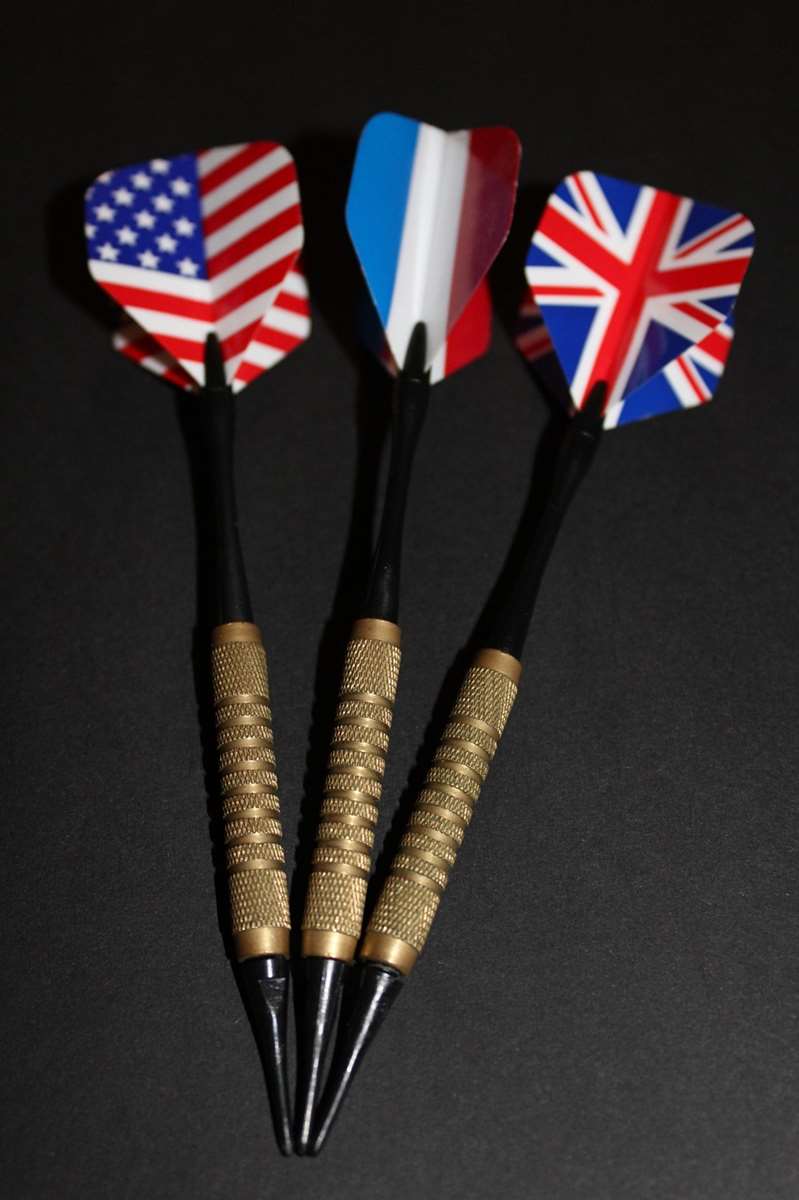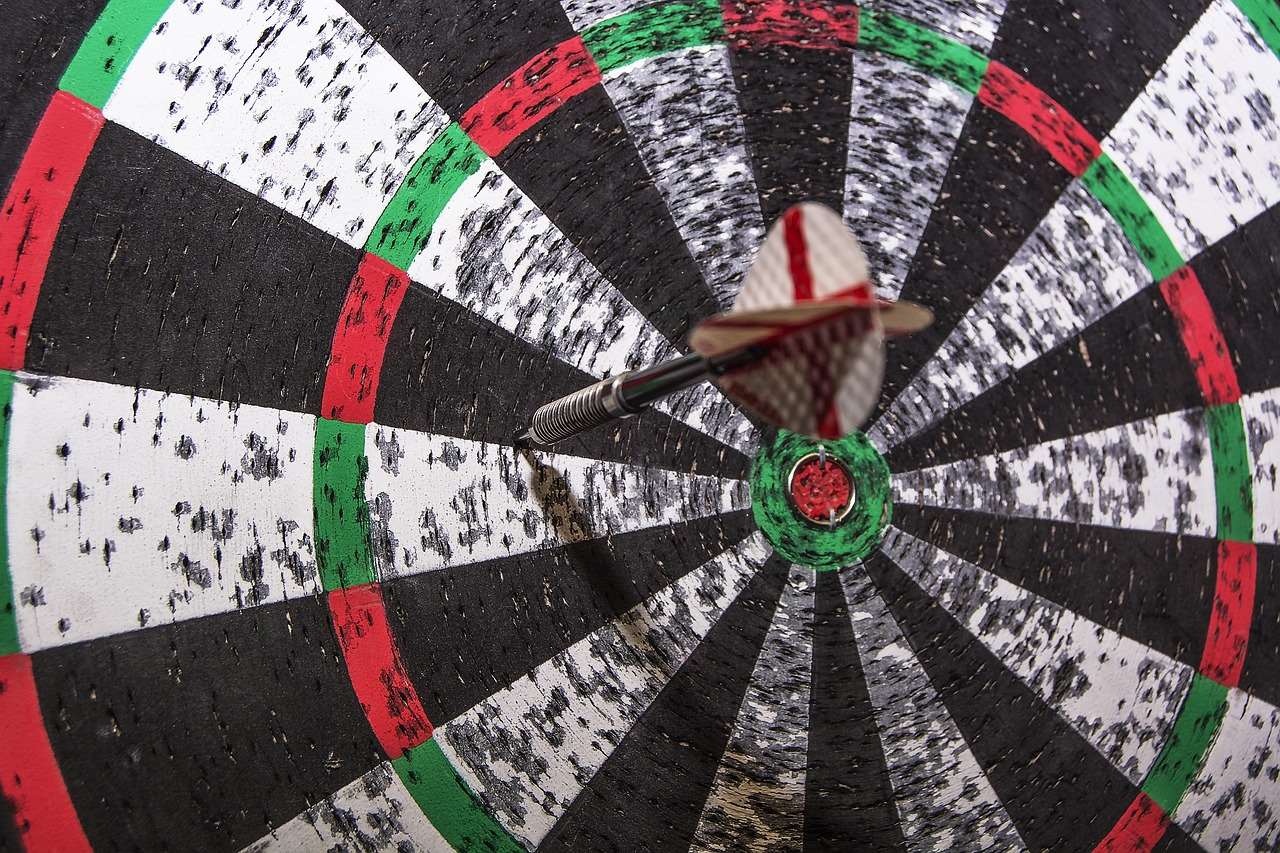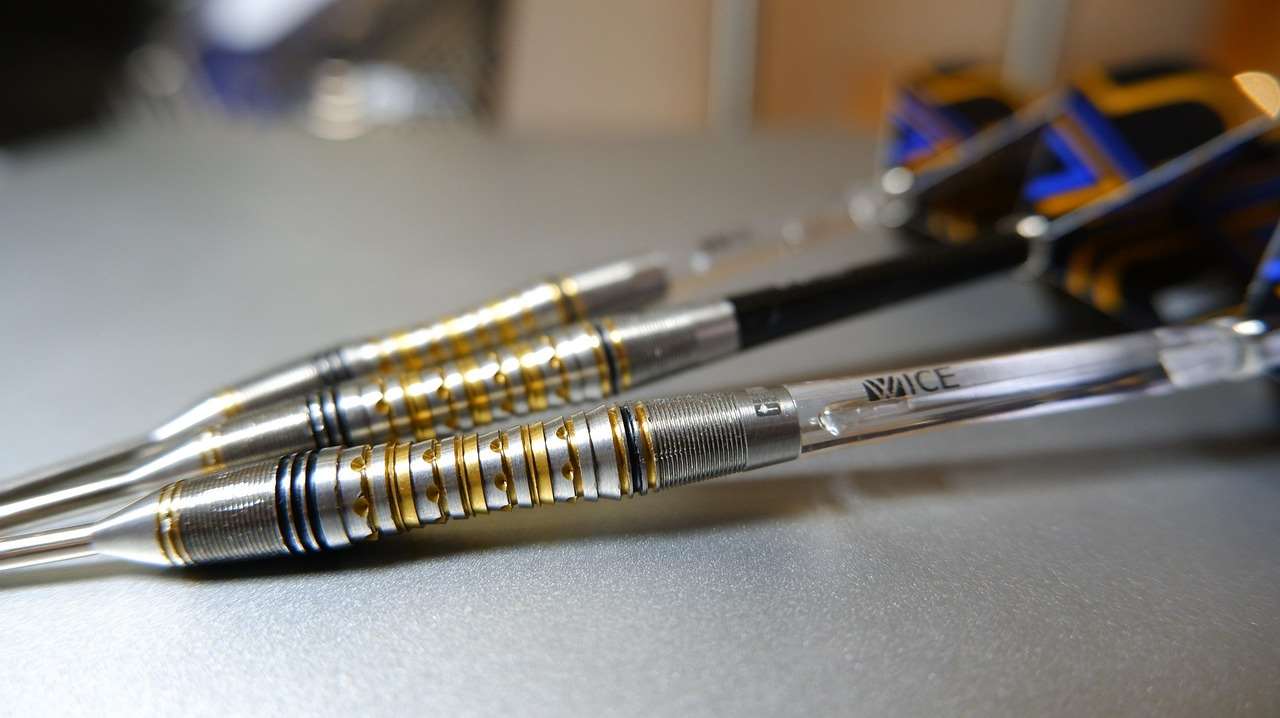Understanding dart flights is crucial for improving your dart game; they control the dart’s stability and trajectory. This article offers a comprehensive explanation of dart flights explained, covering everything from different shapes and materials to their impact on your throw, helping you choose the best flights for your individual style and skill level.
⚠️ Still Using Pen & Paper (or a Chalkboard)?! ⚠️
Step into the future! The Dart Counter App handles all the scoring, suggests checkouts, and tracks your stats automatically. It's easier than you think!
Try the Smart Dart Counter App FREE!Ready for an upgrade? Click above!
Choosing the Right Dart Flights: A Complete Guide
Selecting the right dart flights can feel overwhelming, given the sheer variety available. The key is to understand how different flight characteristics influence your dart’s flight path and stability. Factors like shape, size, material, and even design all play a role. Let’s dive into the specifics.

Dart Flight Shapes and Their Impact
The shape of your dart flights dramatically affects how the dart flies through the air. Here’s a breakdown of some common shapes:
- Standard Flights: The most common shape, providing good stability and control. Ideal for beginners and those seeking a balanced flight.
- Slim Flights: Offer less drag, resulting in a faster, more direct flight. Often preferred by players with a faster throwing motion.
- Kite Flights: A hybrid shape, providing a good balance between stability and speed. A versatile option for various throwing styles.
- Vortex/Fantail Flights: Designed to create more spin, helping to correct wobbles and improve accuracy, especially for players with less consistent throws.
- Pear Flights: Similar to standard but slightly smaller, offering a bit more speed while maintaining reasonable stability.
Experimenting with different shapes is crucial to find what works best for your individual throwing style. Consider your grip, stance, and release when making your decision. Also, remember that a darts flights set can be an inexpensive way to try out several shapes and materials.
Dart Flight Materials: What You Need to Know
Dart flights are typically made from a few different materials, each with its own advantages and disadvantages:
- Polyester: The most common and affordable material. Offers good durability and resistance to tearing.
- Nylon: Slightly more durable than polyester and can withstand more wear and tear. Often used for molded flights.
- Plastic/Polycarbonate: Extremely durable and resistant to damage. Often used for molded flights and those requiring rigidity.
- Paper: Less common but still available. Generally less durable and prone to tearing, but they can be very lightweight and inexpensive.
The material you choose will affect the flight’s durability and its resistance to creasing and tearing. Consider how often you play and how aggressively you throw your darts when selecting a material.
Understanding Dart Flight Size and Surface Area
The size of a dart flight, which directly correlates to its surface area, is a key factor in determining the dart’s stability and speed. Larger flights create more drag, stabilizing the dart but also slowing it down. Smaller flights reduce drag, allowing for a faster but potentially less stable flight. This section will further explore how dart flights explained in terms of size, impact the thrower’s game.

Smaller Flights vs. Larger Flights: Pros and Cons
Choosing between smaller and larger flights involves weighing the trade-offs between speed and stability:
- Smaller Flights:
- Pros: Faster flight, less drag, better for players with a strong, consistent throw.
- Cons: Less stable, more susceptible to wobbling, may require a more precise throwing technique.
- Larger Flights:
- Pros: More stable, less susceptible to wobbling, easier to control, forgiving of minor inconsistencies in your throw.
- Cons: Slower flight, more drag, may not be suitable for players with a faster throwing motion.
Ultimately, the best size for you will depend on your individual throwing style and the characteristics of your darts.
How Flight Size Affects Dart Trajectory
The size of your dart flights directly influences the trajectory of your darts. Larger flights will cause the dart to arc more, while smaller flights will result in a flatter trajectory. Consider the distance you are throwing from and the height of your release when choosing a flight size. A flatter trajectory often benefits from smaller flights and vice versa. Consider how the surface area of a dartboard led light impacts visibility when choosing your flight colors.
Dart Flight Thickness and Durability
The thickness of the dart flight material contributes significantly to its durability. Thicker flights are generally more resistant to tearing and creasing, but they can also add weight to the back of the dart, which may affect its balance.

Understanding Microns and Flight Thickness
Dart flight thickness is typically measured in microns (µm). Common thicknesses range from 75 microns to 150 microns. Thicker flights (e.g., 100+ microns) are generally more durable and last longer, while thinner flights (e.g., 75-90 microns) may offer slightly better performance due to their lighter weight. Finding the right balance between thickness and weight is key.
Extending the Lifespan of Your Dart Flights
Proper care and maintenance can significantly extend the lifespan of your dart flights. Here are some tips:
- Use flight protectors: These small accessories slide onto the back of the flight, preventing damage from incoming darts.
- Avoid bending or creasing the flights: Store your darts carefully to prevent the flights from becoming misshapen.
- Replace damaged flights immediately: Playing with damaged flights can negatively impact your accuracy and potentially damage your darts.
- Consider rotating your flights: If you notice wear on one side of the flight, rotate it to distribute the wear evenly.
Molded Dart Flights vs. Traditional Flights
Molded dart flights represent a significant departure from traditional flights, offering increased durability and consistency. These flights are typically made from a single piece of molded plastic or nylon, eliminating the need for folding and providing a more rigid structure. They are particularly popular amongst professional players. Have you ever wondered if a player with a hitman bad habits and smoking hazard could benefit from these?

The Benefits of Molded Dart Flights
- Increased Durability: Molded flights are significantly more resistant to tearing and damage than traditional flights.
- Consistent Shape: The molded construction ensures a consistent shape and angle, leading to more predictable flight characteristics.
- Reduced Deflections: The rigid structure of molded flights can reduce deflections when darts land close together in the dartboard.
- Easy to Use: No folding required, making them quick and easy to install.
Drawbacks of Molded Dart Flights
- Higher Cost: Molded flights are generally more expensive than traditional flights.
- Limited Adjustability: The fixed shape of molded flights offers less adjustability compared to traditional flights.
- Potential for Bounce-Outs: Some players find that molded flights are more prone to bounce-outs due to their rigid structure.
Experimenting to Find Your Perfect Dart Flight Setup
Ultimately, the best way to find the right dart flights for you is to experiment with different shapes, sizes, and materials. Pay attention to how your darts fly and make adjustments accordingly. Consider consulting a Best darts scoring app to track your progress as you experiment with different setups. Remember, what works for one player may not work for another. So take the time to find what suits your individual style and preferences. Also take time to consider what size shaft darts are best for your game.

Tips for Dart Flight Experimentation
- Start with standard flights: These provide a good baseline for comparison.
- Try different shapes: Experiment with slim, kite, and vortex flights to see how they affect your dart’s flight path.
- Adjust flight size: Try both smaller and larger flights to find the right balance between speed and stability.
- Consider flight material: Experiment with polyester, nylon, and plastic flights to see which offers the best durability and performance for your playing style.
- Pay attention to feedback: Carefully observe how your darts fly and make adjustments based on your observations.
Factors to Consider When Choosing Dart Flights
When choosing dart flights, consider these factors:
- Your throwing style: A faster, more powerful throw may benefit from smaller flights, while a slower, more controlled throw may benefit from larger flights.
- The weight of your darts: Heavier darts may require larger flights for stability, while lighter darts may perform better with smaller flights.
- The length of your dart shafts: Longer shafts can provide more stability, allowing for the use of smaller flights.
- Your personal preferences: Ultimately, the best dart flights are the ones that feel most comfortable and perform best for you.
Conclusion
In conclusion, mastering the nuances of dart flights explained is an ongoing process of experimentation and refinement. By understanding the impact of shape, size, material, and thickness, you can fine-tune your dart setup to achieve optimal performance. Don’t be afraid to try different combinations and pay close attention to how your darts fly. With the right dart flights, you can improve your accuracy, consistency, and overall enjoyment of the game. Now, go out there and experiment to discover the perfect dart flight setup that will elevate your game to the next level!
Hi, I’m Dieter, and I created Dartcounter (Dartcounterapp.com). My motivation wasn’t being a darts expert – quite the opposite! When I first started playing, I loved the game but found keeping accurate scores and tracking stats difficult and distracting.
I figured I couldn’t be the only one struggling with this. So, I decided to build a solution: an easy-to-use application that everyone, no matter their experience level, could use to manage scoring effortlessly.
My goal for Dartcounter was simple: let the app handle the numbers – the scoring, the averages, the stats, even checkout suggestions – so players could focus purely on their throw and enjoying the game. It began as a way to solve my own beginner’s problem, and I’m thrilled it has grown into a helpful tool for the wider darts community.